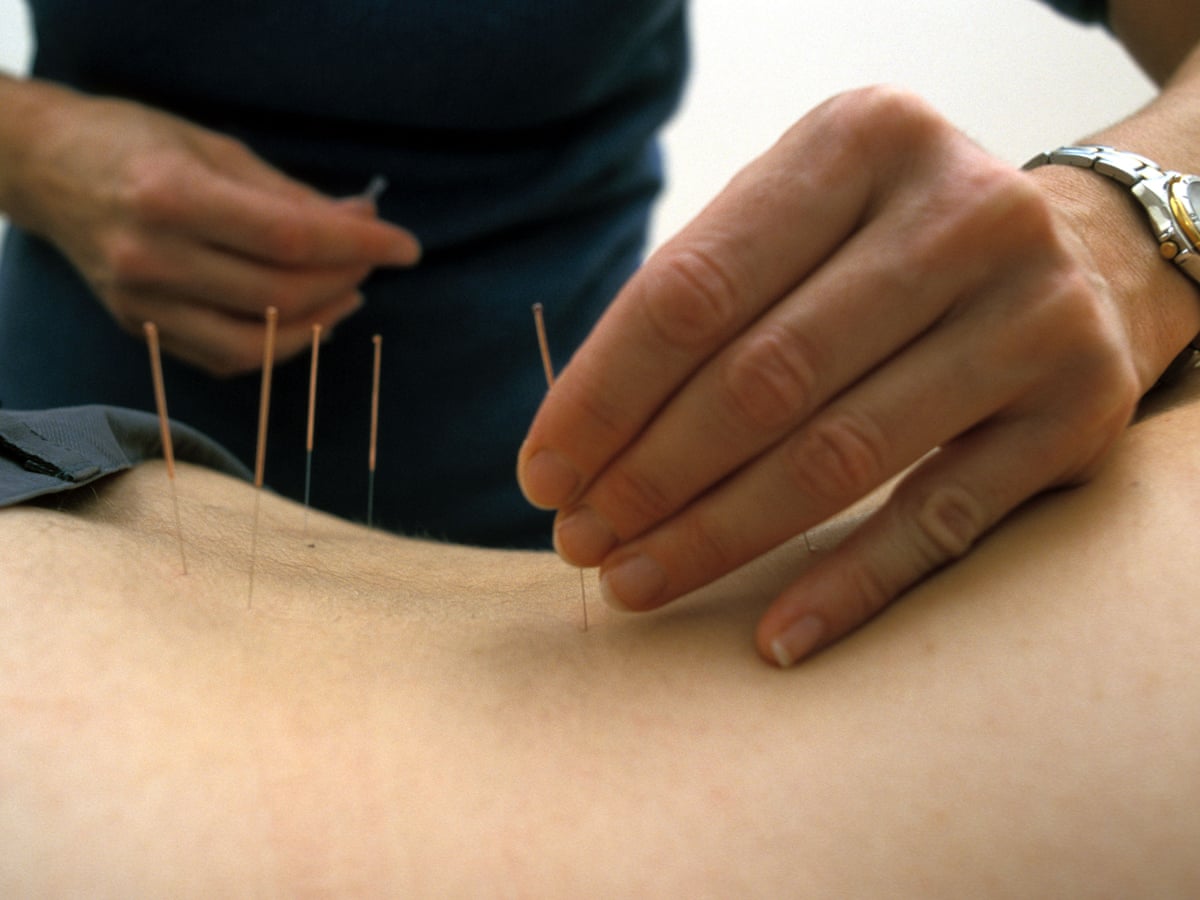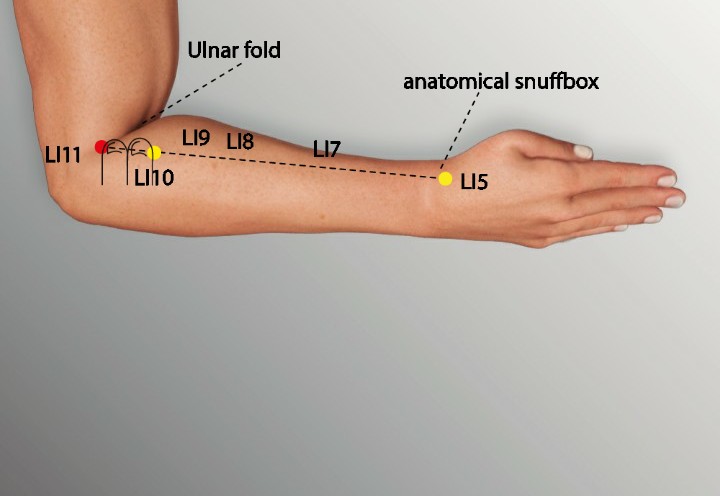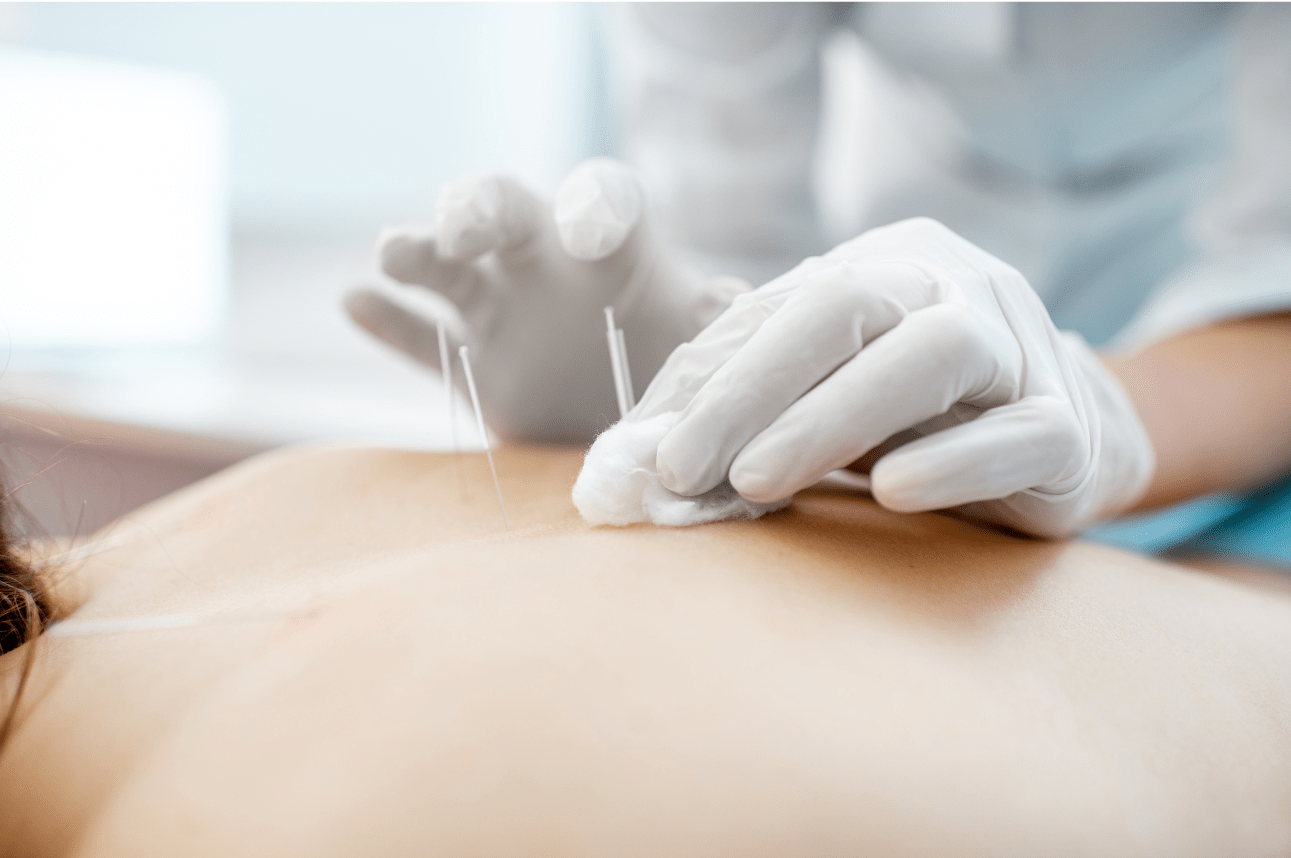Osteoarthritis Back Pain and Acupuncture Treatment in Tokyo
Osteoarthritis (OA) is one of the most common causes of back pain, affecting millions worldwide with its debilitating symptoms. As a degenerative joint disease, OA in the spine can lead to chronic discomfort, stiffness, and reduced mobility, significantly impacting quality of life. While conventional treatments like medications, physical therapy, or surgery are widely used, many individuals are turning to alternative therapies like acupuncture for relief. This guide explores osteoarthritis back pain in depth, examines how acupuncture can treat this condition, and highlights key acupoints used in therapy. Whether you’re seeking natural remedies or curious about holistic approaches, this article provides actionable insights and expert-backed information to help you manage OA-related back pain.
- What Is Osteoarthritis and How Does It Cause Back Pain?
- How Osteoarthritis Causes Back Pain
- Causes and Risk Factors of Osteoarthritis Back Pain
- Symptoms of Osteoarthritis Back Pain
- Conventional Treatments for Osteoarthritis Back Pain
- What Is Acupuncture and How Does It Work?
- Acupuncture for Osteoarthritis Back Pain: How It Helps
- Scientific Evidence for Acupuncture in Osteoarthritis Back Pain
- Key Acupoints for Osteoarthritis Back Pain
- How Acupoints Are Selected
- What to Expect During an Acupuncture Session
- Safety and Side Effects
- Combining Acupuncture with Other Treatments
- Benefits of Acupuncture for Osteoarthritis Back Pain
- Limitations and Considerations
- Frequently Asked Questions (FAQs)
- Conclusion
What Is Osteoarthritis and How Does It Cause Back Pain?
Osteoarthritis is a degenerative joint disease characterized by the breakdown of cartilage and underlying bone in joints. In the spine, OA typically affects the facet joints—small joints between vertebrae that facilitate movement—or the intervertebral discs, leading to pain and stiffness. Spinal OA, also known as spondylosis, is most common in the lumbar (lower back) and cervical (neck) regions, though it can occur in the thoracic (mid-back) spine as well.
Maybe You Need:
How Osteoarthritis Causes Back Pain
In healthy joints, cartilage cushions bones, allowing smooth movement. In OA, cartilage wears away, causing:
- Bone-on-Bone Friction: Loss of cartilage leads to bones rubbing together, triggering pain.
- Bone Spurs (Osteophytes): The body forms bony growths to stabilize joints, which can compress nerves or restrict movement.
- Inflammation: Damaged tissues release inflammatory chemicals, causing swelling and discomfort.
- Muscle Tension: Surrounding muscles may tighten to compensate for joint instability, exacerbating pain.
- Nerve Irritation: Bone spurs or narrowed joint spaces can pinch nerves, causing radiating pain, numbness, or tingling.
These changes result in chronic back pain, stiffness, and reduced flexibility, often worsening with activity or prolonged positions.

Causes and Risk Factors of Osteoarthritis Back Pain
Several factors contribute to spinal OA, including:
- Aging: Cartilage naturally degrades with age, increasing OA risk after age 50.
- Genetics: A family history of OA or spinal issues raises susceptibility.
- Obesity: Excess weight increases stress on spinal joints, accelerating degeneration.
- Repetitive Stress: Occupations or activities involving repetitive bending, lifting, or twisting can wear down joints.
- Poor Posture: Chronic slouching or improper alignment strains spinal structures.
- Injury: Past trauma, like fractures or disc injuries, can predispose joints to OA.
- Sedentary Lifestyle: Lack of exercise weakens supporting muscles, increasing joint stress.
- Other Conditions: Diseases like diabetes or rheumatoid arthritis may contribute to OA development.
Symptoms of Osteoarthritis Back Pain
Symptoms vary depending on the affected spinal region and severity but commonly include:
- Chronic, aching back pain, often worse in the morning or after inactivity
- Stiffness or reduced range of motion in the spine
- Grinding or crunching sensations (crepitus) during movement
- Radiating pain, numbness, or tingling in arms or legs if nerves are compressed
- Muscle spasms or tightness in the back
- Pain that worsens with prolonged sitting, standing, or activity
- Fatigue due to chronic pain and poor sleep
Severe cases may lead to complications like spinal stenosis (narrowed spinal canal) or nerve damage, emphasizing the need for early management.

Conventional Treatments for Osteoarthritis Back Pain
Before exploring acupuncture, it’s useful to understand standard medical treatments for OA-related back pain. These depend on severity and may include:
- Medications: Nonsteroidal anti-inflammatory drugs (NSAIDs), acetaminophen, or muscle relaxants to reduce pain and inflammation.
- Physical Therapy: Exercises to strengthen core and back muscles, improve posture, and enhance flexibility.
- Injections: Corticosteroid or hyaluronic acid injections to reduce inflammation and lubricate joints.
- Lifestyle Changes: Weight loss, low-impact exercise (e.g., swimming, yoga), and ergonomic adjustments to reduce joint stress.
- Surgery: In severe cases, procedures like spinal fusion or laminectomy may stabilize joints or relieve nerve compression.
While effective for many, these treatments can have side effects, high costs, or require recovery time, prompting interest in complementary therapies like acupuncture.
What Is Acupuncture and How Does It Work?
Acupuncture is a key practice in Traditional Oriental Medicine (TOM), used for over 2,000 years to treat various ailments. It involves inserting fine, sterile needles into specific points on the body, known as acupoints, to restore balance and promote healing. In TOM, health depends on the smooth flow of energy through meridians, or energy channels. Blockages or imbalances in energy can lead to pain and illness, including conditions like osteoarthritis back pain.
From a Western perspective, acupuncture’s effects are explained by:
- Pain Modulation: Needle insertion stimulates nerves, altering pain signals in the brain and spinal cord.
- Endorphin Release: Acupuncture triggers the release of natural painkillers, reducing discomfort.
- Improved Blood Flow: It enhances local circulation, delivering nutrients and oxygen to damaged tissues.
- Reduced Inflammation: Acupuncture modulates inflammatory pathways, decreasing swelling in affected joints.
- Muscle Relaxation: It relieves tension in muscles supporting the spine, easing pain and stiffness.
Research supports acupuncture’s efficacy for chronic pain, particularly in osteoarthritis and back pain, making it a promising option for managing OA-related symptoms.
Acupuncture for Osteoarthritis Back Pain: How It Helps
Acupuncture addresses osteoarthritis back pain by targeting pain, inflammation, and muscle tension while promoting overall spinal health. In TOM, OA is often linked to Energy Stagnation, Blood Stasis, Kidney Deficiency, or Damp-Cold Bi Syndrome, which impair energy flow and weaken joints. Acupuncture aims to:
- Alleviate Pain: By stimulating acupoints, acupuncture reduces nerve irritation and joint pain.
- Decrease Inflammation: It modulates inflammatory markers, reducing swelling in facet joints and surrounding tissues.
- Relieve Muscle Tension: Acupuncture relaxes tight muscles, which often contribute to OA pain.
- Improve Circulation: Enhanced blood flow supports joint health and reduces stiffness.
- Strengthen Energy and Kidney Function: In TOM, acupuncture nourishes the Kidneys, which govern bones and joints, improving resilience to degeneration.
Patients often report reduced pain, improved mobility, and better quality of life after acupuncture sessions. While it doesn’t reverse cartilage loss, acupuncture can significantly manage symptoms and enhance conventional treatments.

Scientific Evidence for Acupuncture in Osteoarthritis Back Pain
Research supports acupuncture’s role in managing OA and back pain:
- A 2019 meta-analysis in The Journal of Pain found acupuncture effective for reducing pain and improving function in osteoarthritis patients, including those with spinal OA.
- A 2020 study in Pain Medicine showed acupuncture reduced chronic back pain and stiffness, with effects lasting up to three months post-treatment.
- A 2018 review in Evidence-Based Complementary and Alternative Medicine highlighted acupuncture’s ability to reduce inflammation and improve microcirculation, key factors in OA pain relief.
- A 2021 trial in Arthritis Research & Therapy demonstrated that acupuncture improved pain and mobility in patients with lumbar spondylosis.
While more studies are needed for spinal OA specifically, these findings, combined with TOM clinical experience, suggest acupuncture is a valuable adjunctive therapy.
Key Acupoints for Osteoarthritis Back Pain
Acupuncture treatment for OA back pain involves selecting acupoints based on the affected spinal region, symptoms, and TOM diagnosis. Below are key acupoints commonly used, along with their locations and benefits:
BL23 (Shenshu)
Location: On the lower back, 1.5 inches lateral to the spine, at the level of the second lumbar vertebra.
Benefits: Strengthens the Kidney meridian, supports bone and joint health, and alleviates lower back pain. BL23 is critical for lumbar OA.
Use Case: Ideal for chronic lower back pain, stiffness, or weakness.

BL40 (Weizhong)
Location: In the center of the knee crease, behind the knee.
Benefits: Relieves lower back pain, promotes blood flow, and reduces muscle tension. This point targets the Bladder meridian, which influences the spine.
Use Case: Effective for radiating pain or sciatica-like symptoms from lumbar OA.
GB34 (Yanglingquan)
Location: On the outer leg, below the knee, in the depression in front of the fibula head.
Benefits: Relaxes tendons and muscles, reduces joint stiffness, and improves circulation. GB34 supports the Liver meridian, which regulates energy and blood flow.
Use Case: Best for muscle stiffness or joint pain in the lower back.

GV14 (Dazhui)
Location: On the midline of the back, below the seventh cervical vertebra (base of the neck).
Benefits: Clears heat, reduces inflammation, and relieves neck and upper back pain. GV14 is part of the Governing Vessel, which governs spinal health.
Use Case: Suitable for cervical OA causing neck pain or arm discomfort.
LI11 (Quchi)
Location: At the outer end of the elbow crease when the arm is bent.
Benefits: Reduces inflammation, clears heat, and promotes blood flow. LI11 is used for systemic inflammation in OA.
Use Case: Helpful for patients with warm, swollen joints or radiating pain.

ST36 (Zusanli)
Location: Below the knee, about 3 inches from the shin, outer side of the tibia.
Benefits: Boosts energy, strengthens digestion, and enhances overall energy. ST36 supports joint health by improving circulation and resilience.
Use Case: Effective for fatigue, general weakness, or chronic pain.
How Acupoints Are Selected
A licensed acupuncturist will perform a TOM diagnosis, including pulse reading, tongue examination, and symptom assessment, to identify the root cause (e.g., Kidney Deficiency, Blood Stasis, or Damp-Cold Bi). They may combine local points (near the spine) with distal points (on arms or legs) to address symptoms and underlying imbalances. Treatment is tailored to each patient for optimal results.
What to Expect During an Acupuncture Session
If you’re new to acupuncture, here’s a step-by-step overview of a typical session for OA back pain:
- Consultation: The acupuncturist will review your medical history, symptoms, and lifestyle to diagnose the TOM pattern causing your pain.
- Treatment Plan: They’ll select 6–12 acupoints, typically along the spine, legs, or arms, to target pain, inflammation, and circulation.
- Needle Insertion: Fine, sterile needles (0.16–0.3 mm thick) are inserted into acupoints. You may feel slight tingling, warmth, or heaviness, but pain is minimal.
- Session Duration: Needles remain in place for 20–40 minutes while you relax. Electroacupuncture or moxibustion (heat therapy) may enhance effects.
- Follow-Up: Weekly sessions for 6–12 weeks are common, followed by maintenance sessions every 1–2 months.
Safety and Side Effects
Acupuncture is safe when performed by a licensed practitioner. Minor side effects may include bruising, soreness, or temporary redness at needle sites. Serious complications are rare, but ensure sterile, disposable needles are used to prevent infection. Inform your acupuncturist of any medical conditions, such as bleeding disorders or pregnancy, before treatment.

Combining Acupuncture with Other Treatments
Acupuncture is most effective when integrated with other therapies:
- Physical Therapy: Exercises to strengthen core and back muscles complement acupuncture by improving joint stability.
- Diet: Anti-inflammatory foods (e.g., berries, fatty fish, turmeric) reduce joint inflammation and support OA management.
- Weight Management: Losing excess weight reduces stress on spinal joints, enhancing acupuncture’s benefits.
- Herbal Medicine: TOM herbs like Du Zhong (Eucommia bark) or Sang Ji Sheng (Loranthus) may support joint health, but consult a professional first.
- Heat or Cold Therapy: Applying heat to relax muscles or cold to reduce inflammation can amplify acupuncture’s effects.
Coordinate with your healthcare provider to ensure a cohesive treatment plan.

Benefits of Acupuncture for Osteoarthritis Back Pain
Acupuncture offers several advantages for managing OA-related back pain:
- Non-Invasive: Unlike surgery, acupuncture requires no incisions or recovery time.
- Holistic Approach: It addresses symptoms and underlying TOM imbalances, promoting overall wellness.
- Low Risk: Side effects are minimal compared to medications or invasive procedures.
- Customizable: Treatments are tailored to your specific symptoms and spinal region.
- Stress Relief: Acupuncture promotes relaxation, reducing stress hormones that exacerbate pain.
Limitations and Considerations
While promising, acupuncture has limitations:
- Not a Cure: Acupuncture alleviates symptoms but doesn’t reverse cartilage loss or joint damage.
- Variable Results: Effectiveness depends on OA severity, patient compliance, and lifestyle factors.
- Cost: Sessions typically cost $50–$150, with variable insurance coverage.
- Time Commitment: Multiple sessions are needed for sustained relief.
If your OA back pain is accompanied by severe symptoms like loss of bowel or bladder control, significant weakness, or persistent numbness, consult a spine specialist immediately, as these may indicate a serious condition.
Frequently Asked Questions (FAQs)
Can acupuncture cure osteoarthritis back pain?
Acupuncture cannot cure OA but can significantly reduce pain, stiffness, and improve mobility.
How many acupuncture sessions are needed for OA back pain?
Typically, 6–12 weekly sessions are recommended, followed by monthly maintenance, depending on severity and response.
Is acupuncture painful for osteoarthritis back pain?
Acupuncture is generally painless. You may feel mild tingling or warmth, but discomfort is minimal.
Can I combine acupuncture with surgery for spinal OA?
Yes, acupuncture can aid recovery by reducing pain and inflammation post-surgery, but consult your doctor first.
Are there risks to acupuncture for OA back pain?
Risks are low with a licensed practitioner. Minor bruising or soreness may occur, but serious complications are rare.

Conclusion
Osteoarthritis back pain can profoundly affect daily life, causing chronic discomfort and limiting mobility. While conventional treatments like medications and surgery are effective, acupuncture offers a natural, non-invasive approach to symptom relief. By targeting key acupoints like BL23, BL40, and ST36, acupuncture reduces pain, inflammation, and muscle tension while promoting spinal health. When combined with lifestyle changes and complementary therapies, it can be a powerful tool for managing OA-related back pain.
If you’re considering acupuncture, consult a licensed TOM practitioner to develop a personalized treatment plan. With consistent sessions and a holistic approach, you can alleviate discomfort and improve quality of life naturally. For more information on managing osteoarthritis back pain or finding a practitioner, explore trusted health resources or contact a TOM specialist today.
Fuji Wellness:
- Address: 132-0031 Matsushima 1-chome, 21-14, Tokyo, Japan
- Chat with us: Click here
- Email: sunnyphamsensei@gmail.com





